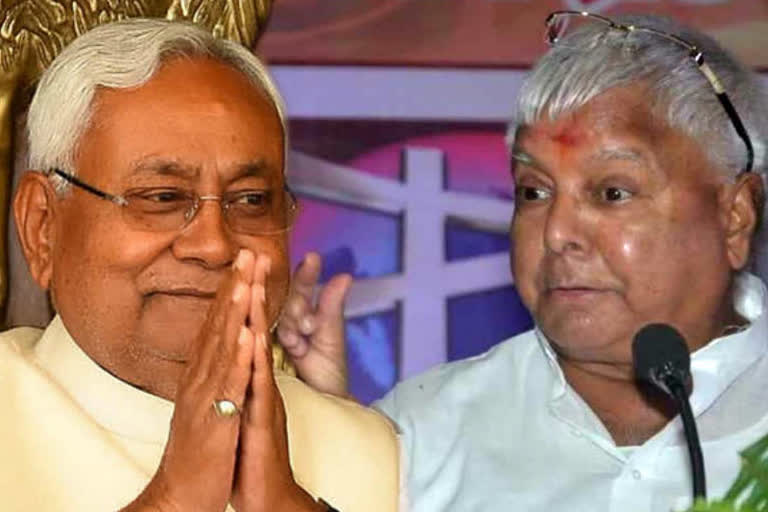Patna: With the elections in Bihar round the corner, talks about development have automatically started gaining momentum. The ruling Nitish government in Bihar is comparing its work in the last 15 years with the 15 years of the preceding governments.
Though the Nitish government, which has been in power for 15 years, is comparing its functioning with that of Lalu Yadav's, the crucial topic of industrialisation could never become an electoral issue in the state. As a result, industrialisation in Bihar could never catch the pace.
A look at the 15-year-rule of Nitish Kumar reveals that work was done in the field of manufacturing, but the situation of industrial disparity in the state could not be overcome.
Big reason for migration
For the past 30 years, Jayaprakash Narayan's disciples have been at the helm of power in Bihar. From 1990 to 2005, Lalu Yadav took the reins of power, while Nitish Kumar was in power from 2005 to 2020.
Pertinently, industrialisation could not be accelerated during this 30-year rule in the state. As a result, 50 lakh people from Bihar migrated for livelihood to other states.
However, a series of claims, counter-claims, and allegations have once again started about industrial development before the Bihar Assembly elections. While the JDU claims that efforts were made to give impetus to industries during Nitish Kumar's reign, the RJD has stressed that it established several factories during the rule of Lalu Yadav.
Read:Mahagathbandhan prioritising alliance with Left parties for Bihar polls
A look at the net state gross domestic product:
- 1991-92 - 13.49%
- 2004-05 - 12.82%
- 2009-10 - 18.39%
Primary sector, secondary and tertiary sector come under the gross state value addition. Gross state value addition in the primary sector was 21.3 per cent during 2017-18, 19.7 per cent in the secondary sector and 59 per cent in the tertiary sector.
When we talk about manufacturing in the secondary sector, it was 9.5 per cent and production was 8.23 per cent. It decreased to 19.1 per cent in 2018-19. During the last four years, the growth rate in electricity, gas and water supply was 1.5 per cent.
The construction sector was 10.2 per cent in 2012, which has come down to 9.5 per cent in 2018-19.
Demonetization and GST also greatly affected the industries in Bihar. Manufacturing was 1.3 per cent in 2017-18, 3 per cent in 2018-19 and 25 per cent in 2016-17.
Read:Nitish Kumar should speak on crime, unemployment in Bihar: Tejashwi Yadav
The industrial growth rate between 2004 and 2009 was 5.8 per cent, which has reached double-digit till date. If we consider per capita income, then in 2004-2005 the annual figure was 7, 914.
So at the same time, the annual per capita income of Bihar increased to 26, 693 in 2017-18.
These figures of per capita income are limited to a few cities in Bihar. There are 15 districts of Bihar, whose per capita income is below 10,000 and there are 35 districts where the per capita income is less than 15,000.
